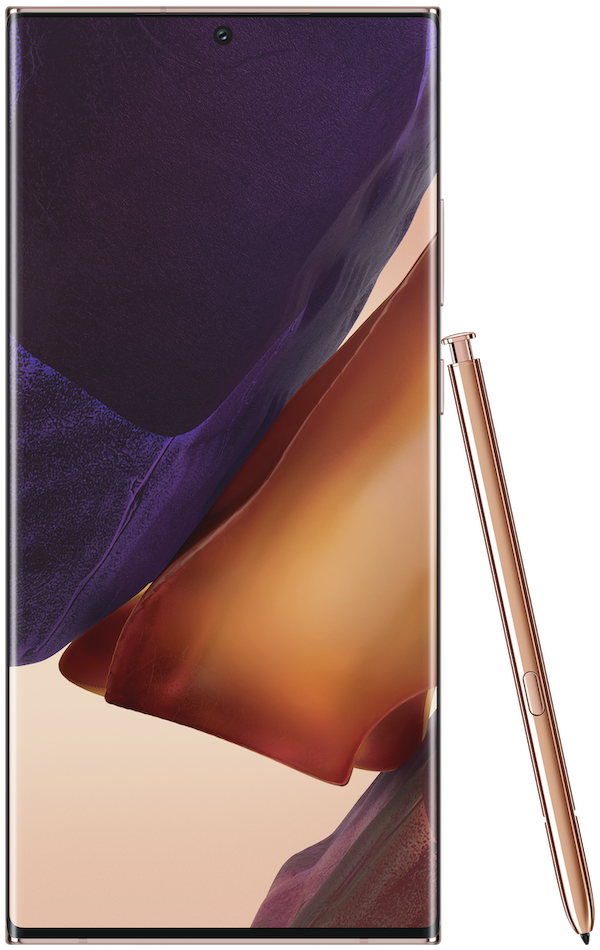The end of the Galaxy Note could be a blessing in disguise for the S Pen

If the recent whisperings from leakers like Ice Universe and Max Weinbach are true, we can expect to see Samsung discontinue its nearly decade-old Galaxy Note line next year, and instead find ways to build S Pen support into the Galaxy S and possibly even Z Fold series.
I have a lot of thoughts on this. The original Galaxy Note was one of the first Android phones I owned that truly reshaped my perception of large form factors — not to mention the idea of reintroducing the much-ballyhooed stylus after capacitive touch screens had seemingly rendered them obsolete. Subsequent models have served to showcase the very best hardware and features in Samsung's catalog, and acted as mid-cycle refreshes that allowed the company to improve upon past designs for future Galaxy S iterations.
Despite my preference for smaller phones, I love the Galaxy Note line and its unique ability to step just beyond the capabilities of most other super-phones. But like it or not, it seems that the product category is on its way out, and even if the S Pen is here to stay, it's going to have to take a different form to adapt to Samsung's other devices.
What devices will support the S Pen?

It's been speculated time and time again that the S Pen would eventually become compatible with Samsung's more mainstream Galaxy S series, and it looks like 2021 will finally be the year we see it happen. Rumor has it that the Galaxy S21 family will feature an Ultra tier, just as we saw with this year's Galaxy S20 Ultra, which will support the S Pen — though notably (sorry), there won't be a silo to slot the S Pen into for storage and charging.
We could also finally see Samsung meet the long-held demands of foldable enthusiasts who have been clamoring for S Pen support on more niche devices, like the followup to my favorite device of 2020, the Galaxy Z Fold 2 — though the more fragile nature of Samsung's foldable displays adds an extra layer of complexity that could slow down S Pen adoption.
How would the S Pen need to change?

The S Pen silo eats up precious internal space in the Note series, occupying what could otherwise be room for a larger battery or camera housing. Of course, as we've seen with other stylus-compatible devices, a stylus can quickly become just another accessory to lose or forget without a place to hold it. To sidestep this, we could see Samsung release a line of specialized cases for the S21 Ultra that add a bit of width to make room for S Pen storage, similar to what we saw with the Galaxy Tab S6 Lite's folio cover.
Pulling other ideas from Samsung's various tablets, the S21 Ultra, and other supporting devices could feature a magnetic divot along the back, à la Galaxy Tab S7+, would could pull double duty as a wireless charger for powering the S Pen's Bluetooth features. However, the leaks we've seen of the S21 Ultra have made no such indications — not to mention what a nightmare it already is trying to keep the S Pen from falling off the back of the Tab S7+ without its kickstand cover.
Be an expert in 5 minutes
Get the latest news from Android Central, your trusted companion in the world of Android
Bluetooth complicates the ways Samsung could externally house the S Pen.
The thing is, without a way to charge the S Pen (which currently charges via internal supercapacitor on the Galaxy Note lineup), the handy air gestures and remote shutter/media controls Samsung has been touting for the last couple of generations go away.
Bluetooth requires power, and the S Pen isn't large enough to fit Qi wireless charging into its housing. Along with that, supercapacitors have a significantly longer shelf life than batteries and are far more forgiving of extreme temperatures.
Of course, the S Pen worked just fine before adding Bluetooth with the Galaxy Note 9, at least for up-close operation. Within a few centimeters of the screen, you could still hover the S Pen to bring up a cursor for precision input or effortlessly scroll through lengthy pages, and the side button could be used to pull up menus with further specialized options. But to regress to this less capable system would simply be adding insult to injury for Galaxy Note enthusiasts.
On the other hand, while I'll be sad to see the Galaxy Note discontinued, these same complications tied to its departure open Samsung up to more experimentation with the S Pen. Folks have long been asking for S Pen support in more devices, and the challenges of making it work with different form factors will force the company to diverge from a design that's remained largely unchanged since the first Note. Not forcing customers to buy a single category of phone for a feature that not everybody wants or needs could also help drive general S Pen adoption up; a potential silver lining in this otherwise sad shift.
I'm not sure how Samsung could successfully implement S Pen support into the version of the Galaxy S21 Ultra we've seen so far without sacrificing at least some of the conveniences enjoyed on the Note 20 Ultra, but I suppose we won't have to wait much longer to find out. All signs point to a January unveiling for the S21 lineup, and you already know we'll be keeping a close eye out for any additional information in the meantime.
Hayato was a product reviewer and video editor for Android Central.


